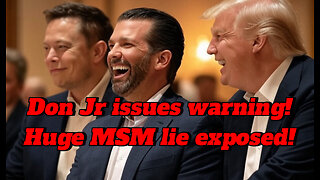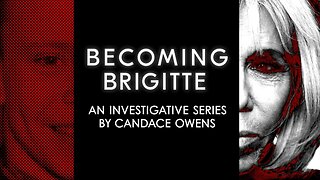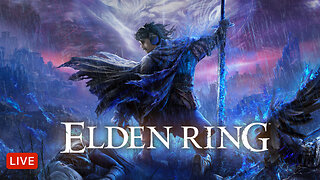Premium Only Content

Breath-Holding Spells in Babies
Breath-holding spells (BHS) are a relatively common and typically benign phenomenon seen in some infants and young children. These spells can be concerning for parents and caregivers, as they often involve a temporary loss of consciousness and changes in breathing patterns. Here's some information about breath-holding spells in babies:
What Are Breath-Holding Spells?
Breath-holding spells are episodes where a baby or young child stops breathing for a short period of time. They can occur in response to certain triggers, such as pain, frustration, fear, or anger.
Types of Breath-Holding Spells:
There are two main types of breath-holding spells:
Cyanotic Spells: These are the most common type. During a cyanotic spell, a child's face turns pale or blue, and they may lose consciousness. This is often triggered by a sudden fright or pain.
Pallid Spells: Pallid spells are less common but more concerning. During a pallid spell, the child's face becomes extremely pale, and they may lose consciousness as well. These spells are usually triggered by a sudden strong emotion, such as fear or anger.
Duration:
Breath-holding spells are usually brief, lasting for seconds to a minute. Afterward, the child typically starts breathing again on their own.
Age Range:
Breath-holding spells are most common in infants and toddlers, typically occurring between 6 months and 6 years of age. They tend to decrease in frequency as a child gets older.
Triggers:
Various triggers can lead to breath-holding spells, but they often involve emotional or physical stress. Common triggers include pain from a fall or injury, frustration from not getting their way, or intense anger or fear.
Management:
While breath-holding spells can be distressing to witness, they usually do not cause any harm to the child. It's essential for parents and caregivers to stay calm during an episode.
If you suspect a breath-holding spell is about to occur (such as when you notice your child turning red or blue), try to remove the trigger or calm them down if possible.
After a spell, check your child's breathing and make sure they are breathing normally.
If your child has frequent or severe breath-holding spells or if there are any concerns about their health, consult with a healthcare provider for a thorough evaluation.
Outlook:
Most children outgrow breath-holding spells as they get older and learn to manage their emotions better. These spells are usually not indicative of any underlying serious medical condition.
It's important to remember that while breath-holding spells can be unsettling to witness, they are typically harmless and part of normal childhood development. However, if you have any concerns about your child's health or the frequency and severity of these spells, it's always a good idea to seek advice from a healthcare professional to rule out any underlying issues.
-
 2:04:52
2:04:52
Kim Iversen
8 hours agoElon's Pumping Out Babies Like They're Tesla Model 3's | EU Panics Over Peace Talks, Wants More War
105K109 -
 1:05:35
1:05:35
Man in America
11 hours agoFort Knox & Trump’s Secret Gold Move—The Financial Reset NO ONE Is Ready For?
58K29 -
 2:21:20
2:21:20
Robert Gouveia
7 hours agoTrump Goes to SCOTUS! Judge CAVES on DOGE? Fani Willis Not Happy!
89.9K26 -
 20:41
20:41
Stephen Gardner
7 hours ago🔥You Won't BELIEVE What JUST Happened To Don Trump Jr.!!
89.7K129 -
 58:00
58:00
The StoneZONE with Roger Stone
5 hours agoEuropean Leaders Resist Trump Peace Overtures To Their Own Demise | The StoneZONE w/ Roger Stone
63.3K11 -
 9:29
9:29
AlaskanBallistics
7 hours ago $4.38 earnedWyoming Suppressors and Rifles at Shot Show 2025
64.3K3 -
 1:06:40
1:06:40
Donald Trump Jr.
11 hours agoThe Left is Taking one L After Another, Live with Michael Knowles | Triggered Ep. 217
159K109 -
 47:17
47:17
Kimberly Guilfoyle
11 hours agoWoke Gets DOGE’d, Live with AJ Rice & Jarrett Stepman | Ep. 197
119K42 -
 20:11
20:11
Candace Show Podcast
10 hours agoBecoming Brigitte: Candace Owens x Xavier Poussard | Ep 6
178K313 -
 8:25:38
8:25:38
Dr Disrespect
14 hours ago🔴LIVE - DR DISRESPECT - ELDEN RING DLC - REVENGE
185K22